Tools - Egypt and North Africa - Sold antiquities
Archive of sold antiquities
All artefacts sold in our gallery are fully documented in our online archive and database. Being a specialist ancient art dealer, preserving also the more recent history of each and every piece sold in our shop is at our heart. That is particularly useful for artefacts that changed owners in the meantime. Information that may have been lost in the process can be easily restored from our archives. Please do not hesitate to contact us if you need further information about ancient items that have been sold in our gallery. We can help you with reconstructing the history of ownership for those items. All information about our customers will be kept confidential, of course.-
 Großer Faustkeil des Homo Erectus
Großer Faustkeil des Homo ErectusAltsteinzeit, um 200.000 v. Chr. Deutliche Spuren grober Werkzeugbearbeitung durch Homo Erectus. Schweres Objekt mit dunkler Patina.
Price: on request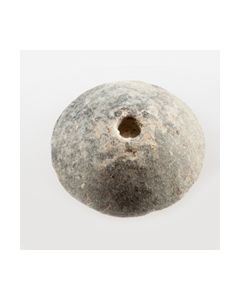 Antiker Spinnwirtel aus Ägypten
Antiker Spinnwirtel aus ÄgyptenHellenistischer bis römsicher Spinnwirtel aus Naturstein. Flacher Körper mit kreisförmigem Querschnitt. 4 Jh. v. Chr. bis 4. Jh. n. Chr.
Price: on request Antiker Spinnwirtel aus Ägypten
Antiker Spinnwirtel aus ÄgyptenHellenistischer bis römsicher Spinnwirtel aus Naturstein. Flacher Körper mit kreisförmigem Querschnitt. 4 Jh. v. Chr. bis 4. Jh. n. Chr.
Price: on request Antiker Spinnwirtel aus Ägypten
Antiker Spinnwirtel aus ÄgyptenHellenistischer bis römsicher Spinnwirtel aus Naturstein. Flacher Körper mit kreisförmigem Querschnitt. 4 Jh. v. Chr. bis 4. Jh. n. Chr.
Price: on request Ägyptische Gussform aus der Amarna-Zeit
Ägyptische Gussform aus der Amarna-ZeitGussform aus Terrakotta, für ein Amulett in Form eines Blütenblatts. 18. bis 19. Dynastie, 1600 v. Chr. bis 1100 v. Chr., Altes Ägypten.
Price: on request Großer Faustkeil des Homo Erectus
Großer Faustkeil des Homo ErectusAltsteinzeit, um 200.000 v. Chr. Deutliche Spuren grober Werkzeugbearbeitung durch Homo Erectus. Schweres Objekt mit dunkler Patina.
Price: on request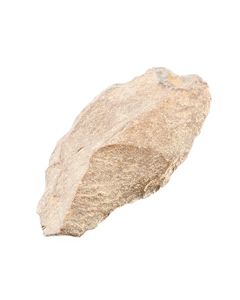 Faustkeil des Homo Erectus, Palöolithikum
Faustkeil des Homo Erectus, PalöolithikumAltsteinzeit, um 200.000 v. Chr. Deutliche Spuren grober Werkzeugbearbeitung durch Homo Erectus. Schweres Objekt mit dunkler Patina.
Price: on request Großer Faustkeil des Homo Erectus
Großer Faustkeil des Homo ErectusAltsteinzeit, um 200.000 v. Chr. Deutliche Spuren grober Werkzeugbearbeitung durch Homo Erectus. Schweres Objekt mit dunkler Patina.
Price: on request Großer Faustkeil des Homo Erectus
Großer Faustkeil des Homo ErectusAltsteinzeit, um 200.000 v. Chr. Deutliche Spuren grober Werkzeugbearbeitung durch Homo Erectus. Schweres Objekt mit dunkler Patina.
Price: on request Antiker Spinnwirtel aus Ägypten
Antiker Spinnwirtel aus ÄgyptenHellenistischer bis römsicher Spinnwirtel aus Naturstein. Flacher Körper mit kreisförmigem Querschnitt. 4 Jh. v. Chr. bis 4. Jh. n. Chr.
Price: on request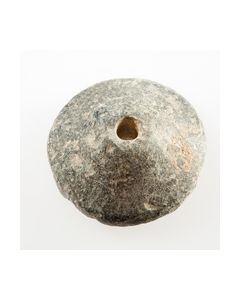 Antiker Spinnwirtel aus Ägypten
Antiker Spinnwirtel aus ÄgyptenHellenistischer bis römsicher Spinnwirtel aus Naturstein. Flacher Körper mit kreisförmigem Querschnitt. 4 Jh. v. Chr. bis 4. Jh. n. Chr.
Price: on request Faustkeil des Homo Erectus, Palöolithikum
Faustkeil des Homo Erectus, PalöolithikumAltsteinzeit, um 200.000 v. Chr. Deutliche Spuren grober Werkzeugbearbeitung durch Homo Erectus. Schweres Objekt mit dunkler Patina.
Price: on request Antiker Spinnwirtel aus Ägypten
Antiker Spinnwirtel aus ÄgyptenHellenistischer bis römsicher Spinnwirtel aus Naturstein. Flacher Körper mit kreisförmigem Querschnitt. 4 Jh. v. Chr. bis 4. Jh. n. Chr.
Price: on request Antiker Spinnwirtel aus Ägypten
Antiker Spinnwirtel aus ÄgyptenHellenistischer bis römsicher Spinnwirtel aus Naturstein. Flacher Körper mit kreisförmigem Querschnitt. 4 Jh. v. Chr. bis 4. Jh. n. Chr.
Price: on request Antiker Spinnwirtel aus Ägypten
Antiker Spinnwirtel aus ÄgyptenHellenistischer bis römsicher Spinnwirtel aus Naturstein. Flacher Körper mit kreisförmigem Querschnitt. 4 Jh. v. Chr. bis 4. Jh. n. Chr.
Price: on request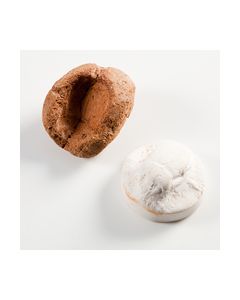 Egyptian scarab amulet mould
Egyptian scarab amulet mouldGussform aus Terrakotta, für ein Amulett in Form eines Skarabäuskäfers. Neues Reich bis ptolemäische Zeit.
Price: on request Egyptian amulet mould from the Amarna period
Egyptian amulet mould from the Amarna periodGussform aus Terrakotta, für ein Amulett in Form eines Blütenblatts. 18. bis 19. Dynastie, 1600 v. Chr. bis 1100 v. Chr., Altes Ägypten.
Price: on request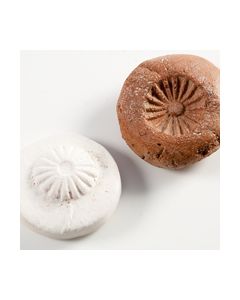 Egyptian amulet mould from the Amarna period
Egyptian amulet mould from the Amarna periodGussform aus Terrakotta, für ein Amulett in Form eines Blütenblatts. 18. bis 19. Dynastie, 1600 v. Chr. bis 1100 v. Chr., Altes Ägypten.
Price: on request

